Call it the power of the shamrock or the charm of the leprechaun, but one thing is for certain: Ireland is the homeland of some of the most curious, independent and enthusiastic breeds ever!
The Native Irish dogs have been developed down centuries in the mountains, woods and bogs of the country and there are currently nine recognized breeds that fall into three categories: Hounds, Gundogs and Terriers. Even though canines take the lead, we are glad to announce that Celtic cats do make a stand as well!
Irish Terrier: A pooch proud of its roots
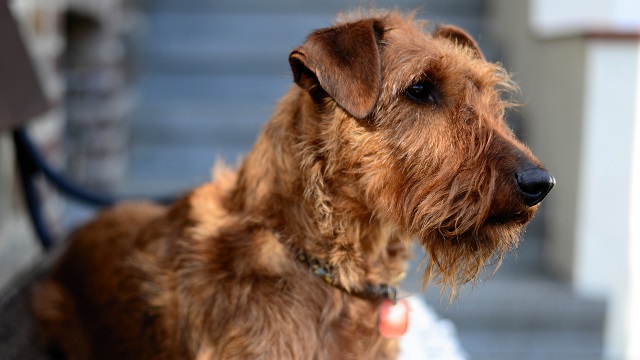
It is believed to be one of the oldest terriers and its recognition dates back to 1875 in Glasgow.
Being a true typical example of the Terrier Group, these dogs are loyal, spunk and highly adaptable, which makes them quite fit for families. Not only will they be enthusiastic playmates for children, they will also guard both people and property with fierce determination.
Kerry Blue Terrier: The quintessential working dog

Although the breed’s actual origin remains unknown, it may have first appeared on the scene back in the late 1800’s. There are a couple of tales regarding the breed’s roots, but no matter its ancestry, the Kerry has always been a highly prized multi-purposed gundog in Ireland. They’re always ready to catch a rodent or two, while showing off their majestic blue coat.
Since they are extremely energetic, intelligent and with a high prey drive, they are definitely not the best choice for novice dog owners. On the plus side, when in the right hands, these terriers can make wonders and will get you out of the couch for sure.
Soft Coated Wheaten Terrier: The true Saint Patrick’s breed
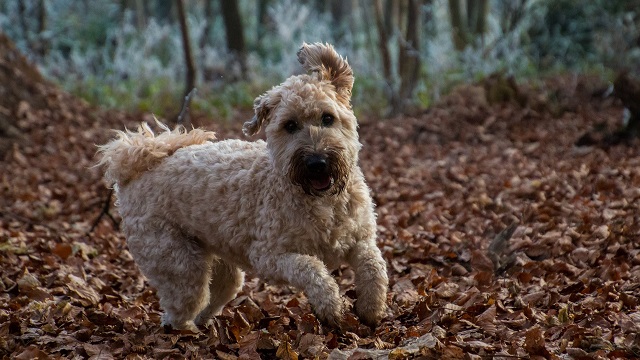
If you are looking for the real Saint Patrick’s dog, the Soft Coated Wheaten Terrier is your guy! That’s because the Irish Kennel Club officially recognized the breed on the 17th of March 1937.
These adorable fluff balls are known for their easy-to-train demeanor and sweet personalities! Consider a Wheaten if you like the terrier’s looks but find their personalities a bit overwhelming. Don’t get us wrong! The Wheaten has typical terrier traits, being a lively and happy dog, but they tend to be less scrappy than some other terrier breeds. On the down side, you will have loads of work keeping their soft, silky and gently waving coat free from dirt and debris!
Glen of Imaal Terrier: The roasting spit’s master
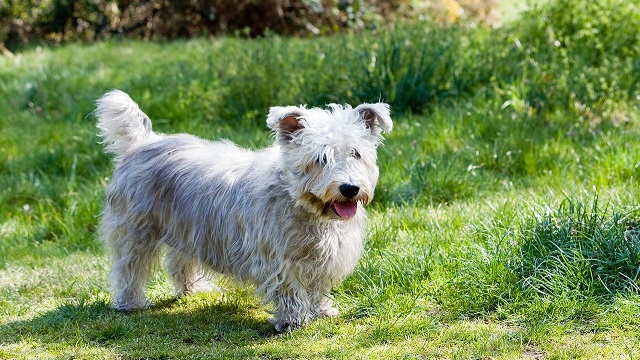
The Glen of Imaal is a remote valley in Ireland’s Wicklow Mountains, and also the birthplace of this hardy, intelligent, and friendly terrier.
Due to its light weight, high strength and rugged character, the breed’s original job was to dig into burrows to root out nuisance badgers. A fun fact is that, when in need, they could be pulled out from the hole by the tail! Besides that, the Glen of Imaal was also used as a turnspit dog, once an essential part of every large kitchen, designed to fit in a wheel and run for hours. All to save the cook from the trouble of turning the roasting spit!
Overall, even if these dogs are strong and built for hard work, they still have gentle and docile manners. Drifting from the Terrier’s usual habits, they tend not to bark.
Irish Setter: The sophisticated one (Gundog)
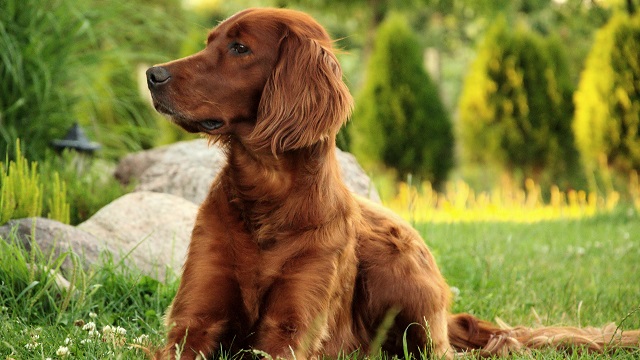
Suited for the runways, this elegant setter surely has one of the most exquisite looks due to its distinctive and eye-catching deep red mahogany coat with silky hair. Add in the breed’s unbound enthusiasm, superior hunting skills and happy disposition and few can match it as an ideal companion pet, especially for kids!
If you are lucky enough to own an Irish Setter puppy, prepare yourself for some years of childish behaviour throughout a fair part of adulthood.
Irish Red and White Setter: The father of beautifulness (Gundog)
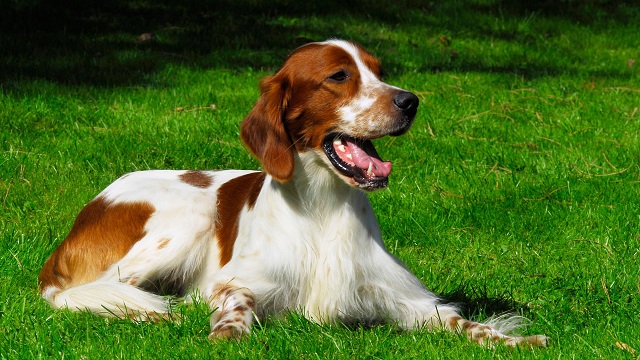
Believed to be the forerunner of the Irish Setter, the Irish Red and White Setter breed almost disappeared in the late 1800s, when its now much more well-known red cousin became highly popular.
Besides being an efficient gundog, skilled in sniffing out and pointing to the hiding spots of grouse and game birds, they are wonderful companion buddies. Always eager to spend tons of quality time with their family!
Irish Water Spaniel: The tail says it all (Gundog)
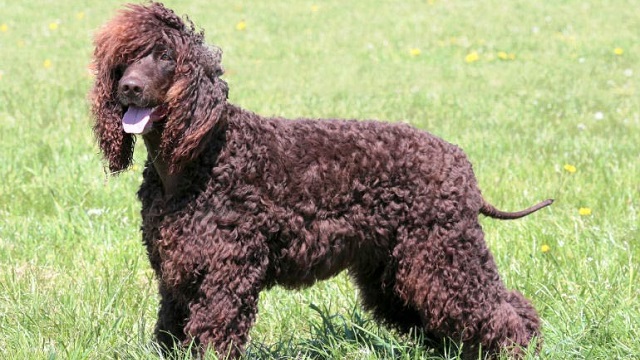
There is no real evidence of the breed’s ancestry except in its most peculiar feature: the rat tail. This feature appears in no similar dog and makes it very likely that the modern breed had an indigenous Irish ancestor. The tail has given rise to the names “ WhipTail” and “ Rat Tail”.
Unfortunately it is quite difficult to get a glance of their long and loose curls since these dogs are fairly rare.
Irish Wolfhound: The “Gentle Giant” (Hound)
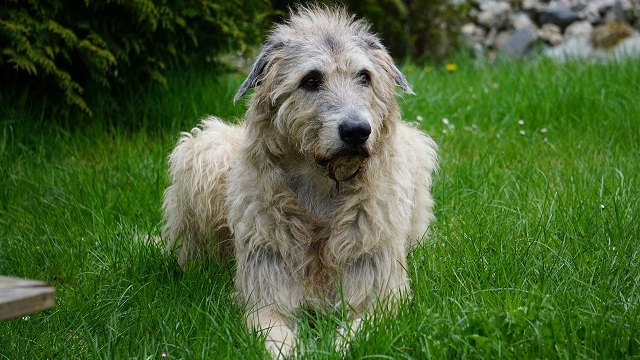
It is for sure one of the most magnificent Irish breeds due to its gigantic size and affectionate, gentle character. Once used for hunting large game like wolves, boars, and even bears, nowadays they are sought for their phenomenal family features.
Just a tiny little bit of advice: keep in mind to save some room on the couch!
Kerry Beagle: The “GADHAR” direct ancestor (Hound)

Next to the Irish Wolfhound, the Kerry Beagle may actually be the oldest of the native Irish breeds, going back probably to the time of the first Celtic settlements in Ireland. Curiously enough, it is believed that the name “Beagle” comes from the Irish word “beag” (meaning small) and certainly the Kerry fits the category!
Although they are best known as a hunting dog, the Kerry Beagle is a friendly dog as well, ideal for active families.
Manx cat: The cat with no tail
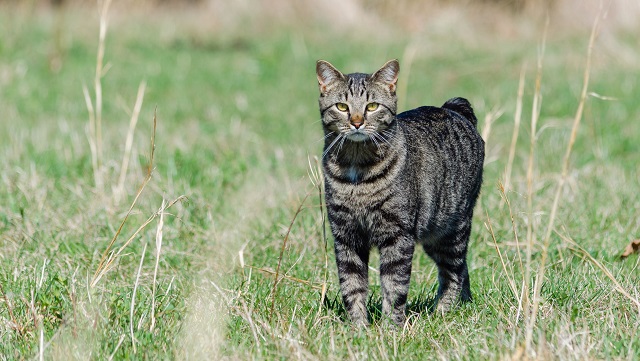
Born on the Isle of Man, this sole Irish cat breed was first developed as a working stray. Today, it is considered to be a dog-like kitten due to their loyalty and playfulness!
All Manx cats carry two genes, one for no tail, and other for a normal length tail. This gave rise to other breed lines like the Isle of Man, which expresses the same Manx features but with tails. Along the times, many other variations also developed, giving birth to the Cymric (long-haired) and the Tasman Manx (curly-coated).
Now that you have a fair arsenal of curiosities about these wonderful Irish breeds, have a blast while sharing a pint or two with your friends! On the other hand, if you are stuck at home because of the world’s new virus, pick an Irish movie, make yourself a delightful hot beverage and just squeeze onto the sofa with your four-legged buddy!





